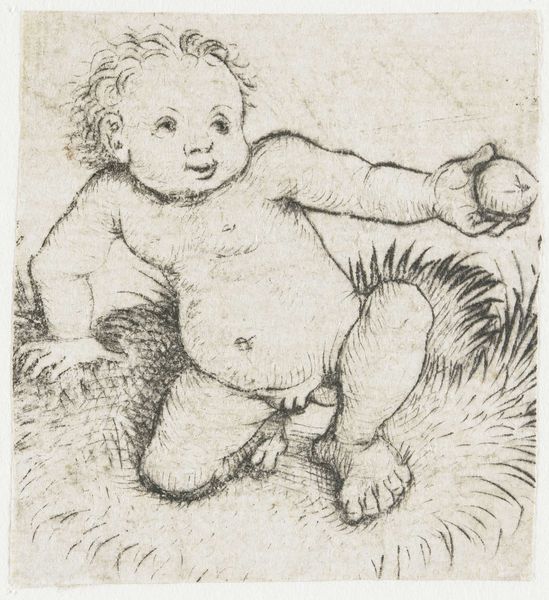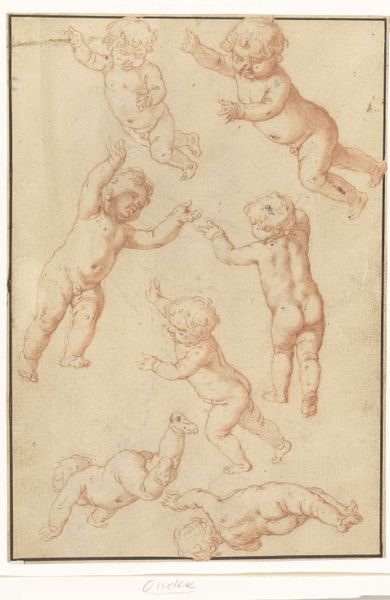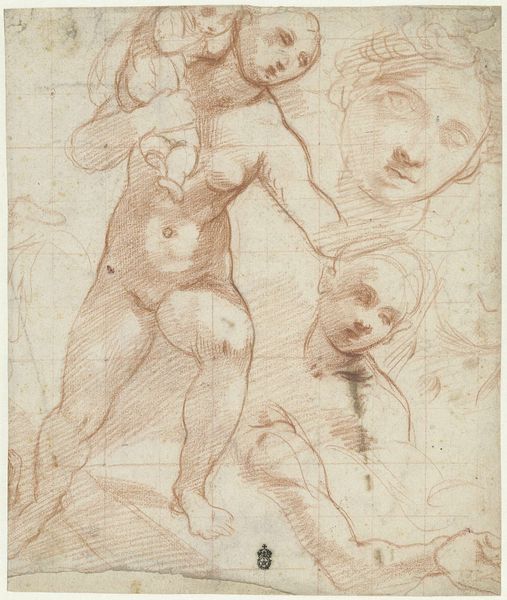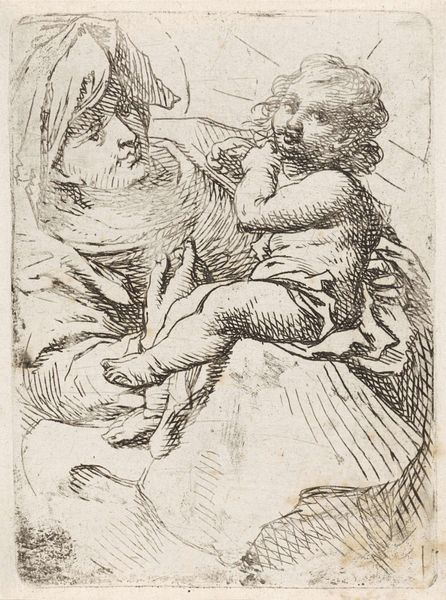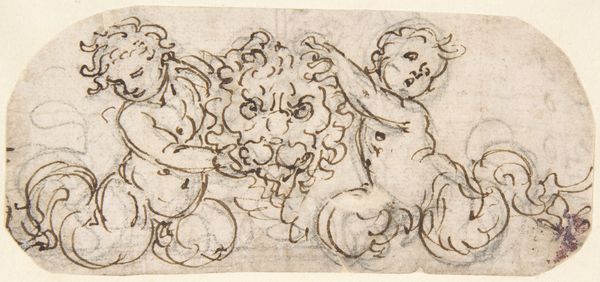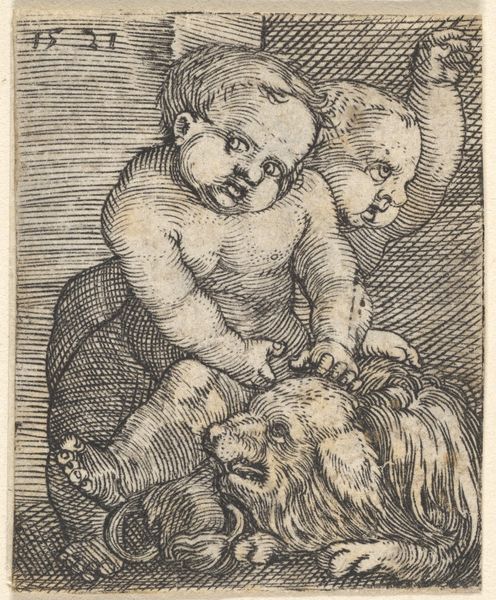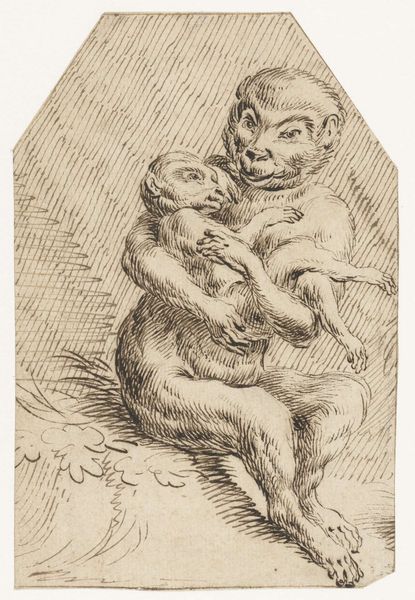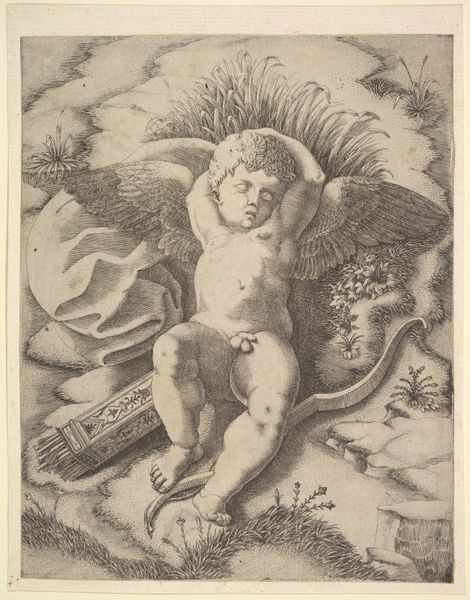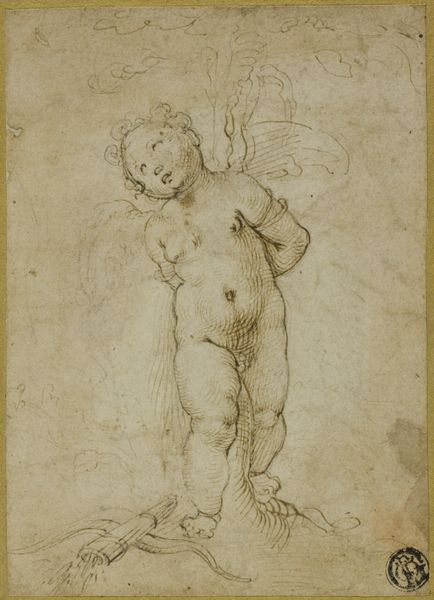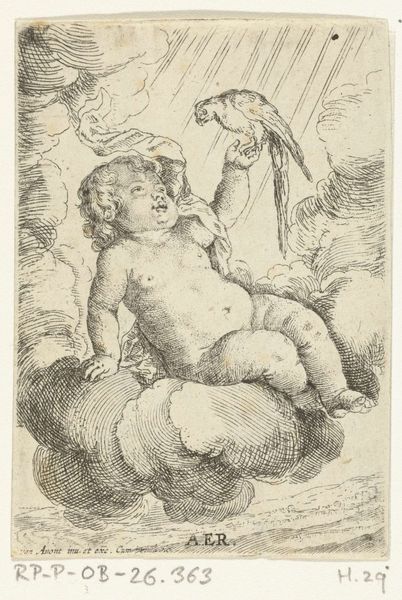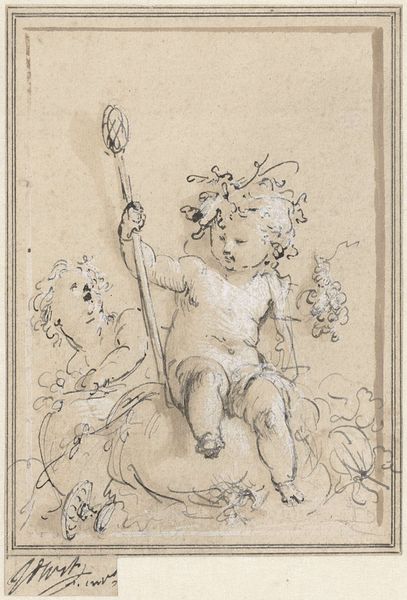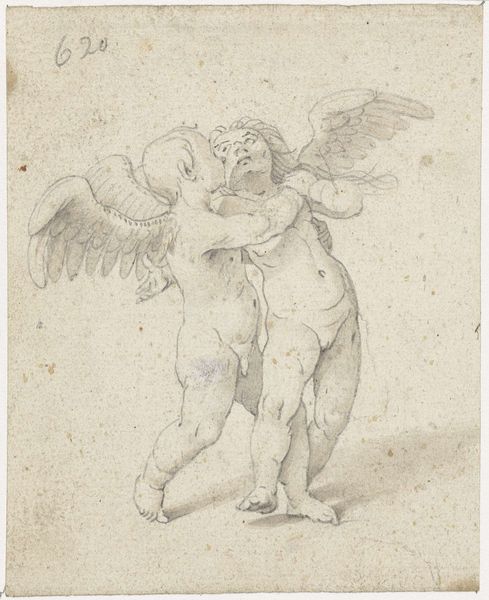
drawing, pencil
#
drawing
#
toned paper
#
light pencil work
#
medieval
#
quirky sketch
#
pencil sketch
#
figuration
#
personal sketchbook
#
pen-ink sketch
#
pencil
#
sketchbook drawing
#
pencil work
#
genre-painting
#
sketchbook art
#
fantasy sketch
Dimensions: height 74 mm, width 64 mm
Copyright: Rijks Museum: Open Domain
Curator: Immediately, I see pure, unadulterated joy! This quick sketch of two children playing emanates a carefree energy. Editor: I'm intrigued. We're looking at "Two Children Playing" rendered around 1470-1475 by the enigmatic Master of the Amsterdam Cabinet. What feelings does the image conjure up for you, and why? Curator: The Master beautifully captured childhood innocence and the delightful, yet awkward, nature of play in a tangible form. The slightly smudged pencil lines, on what appears to be toned paper, impart a rare glimpse into childhood’s emotional core. These playful forms call forth feelings from a primal cultural well. Editor: Interesting perspective. It reminds me that childhood, as a socially constructed category, was being further formalized during the late medieval and early Renaissance periods. Though intimate family life was slowly becoming an important social space, many children’s lives remained arduous. We might read into the drawing an unconscious desire for these innocent pastimes. Curator: I agree with you on the social context. The lack of idealization in the children’s forms indicates this artist wasn't making commentary on aristocratic birth. But there is something inherently archetypal about how childhood innocence translates across time periods. The ring-shaped ground beneath the two children suggests the idea of "the circle of life" is never that far. Editor: I hadn't considered that association, but now that you mention it... Looking closer at their interaction, who are they in relationship to one another and to society at large? One appears to be piggybacking the other, whose arm is lifted, as if waving in surrender. Is that power, complicity, competition or protection being pictured here? And what are its implications? Curator: What an intriguing line of questioning! By using soft lines to draw a universally recognized activity, this Medieval work of art speaks a modern psychological language that could encourage many varied associations. The artwork speaks with subtlety and light. Editor: Yes, and those delicate pencil strokes provide a compelling study on the social and political dynamics interwoven with human bonds. It leaves one to ponder what the figures and forms may disclose further, within an unfolding symbolic discourse.
Comments
No comments
Be the first to comment and join the conversation on the ultimate creative platform.
